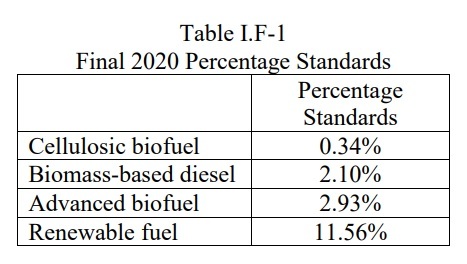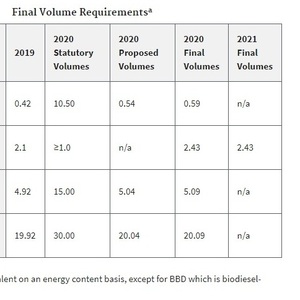EPA finalizes 2020 RVOs, SRE rule; disappoints biofuels industry



December 19, 2019
BY Erin Voegele
Advertisement
Advertisement
Related Stories
Iowa Secretary of Agriculture Mike Naig announced that the Iowa Renewable Fuels Infrastructure Program Board recently approved an additional 90 applications from Iowa fuel retailers to support new and expanded ethanol infrastructure projects.
The White House OMB on June 11 concluded its review of two RFS rulemakings, including a proposed rule to set new renewable volume obligations (RVOs) and a final rule for a partial waiver of the 2024 cellulosic RVO.
The USDA maintained its forecast for 2025-’26 corn use in ethanol production in its latest World Agricultural Supply and Demand Estimates report, released June12. The outlook for season-average corn prices was also unchanged.
U.S. Treasury Secretary Scott Bessent on June 12 committed to implementing upcoming changes to the 45Z clean fuel production credit “in the most robust way” and ensuring foreign actors do not have a backdoor into the program.
The U.S. Department of Commerce on June 10 confirmed the termination of 14 discretionary federal advisory committees, including one aimed at boosting the competitiveness of U.S. renewable energy and energy efficiency exports





